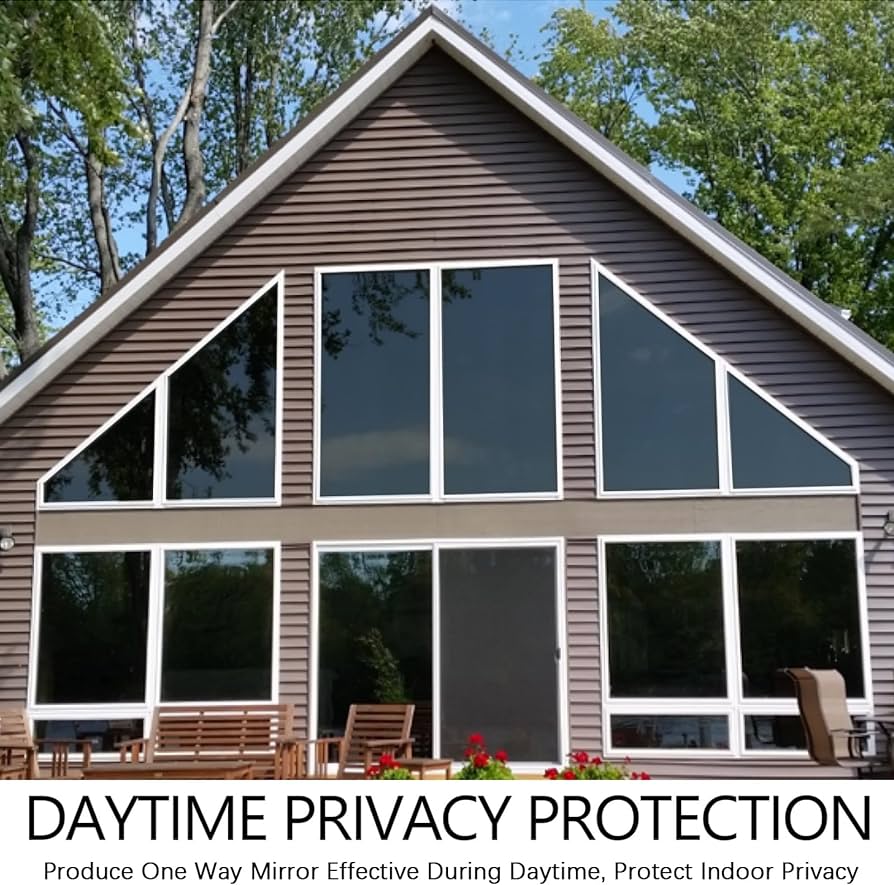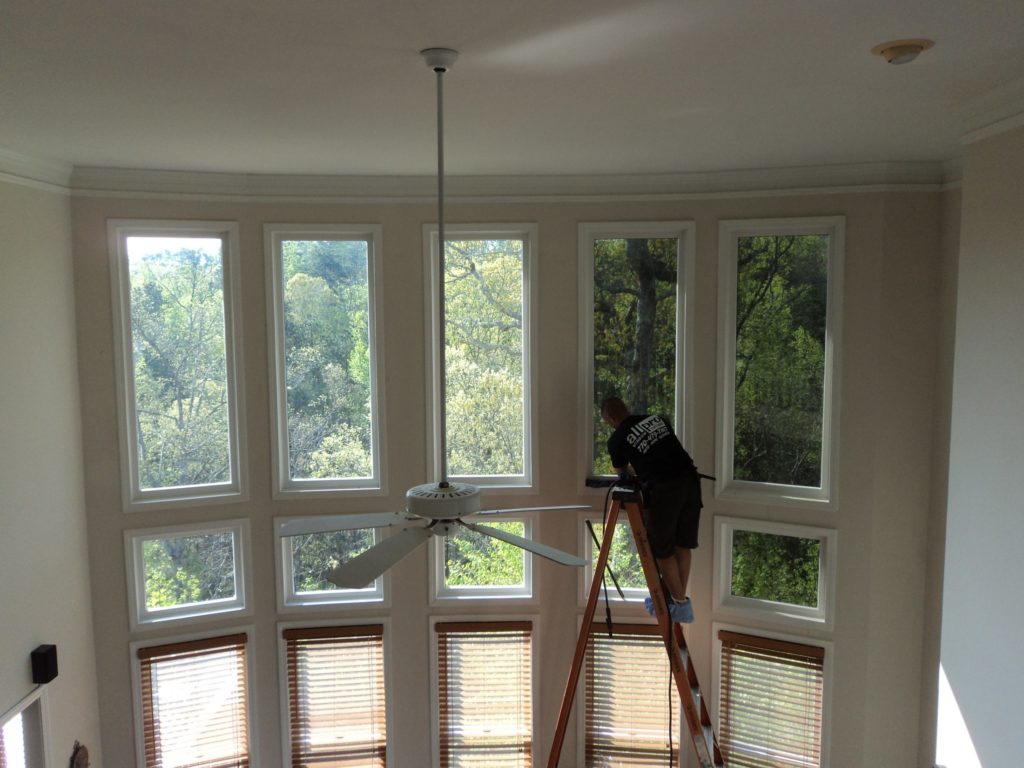Cost Effective Residential Window Tint Options for Every Budget plan
Cost Effective Residential Window Tint Options for Every Budget plan
Blog Article
Just How Residential Window Tinting Boosts Your Home's Power Efficiency
Residential window tinting presents a compelling service for property owners looking for to improve energy performance within their living rooms. By applying specialized movies to home windows, it efficiently reduces warm transfer, thus supporting indoor temperatures and minimizing the requirement for too much heating or cooling. This not only stops energy intake yet additionally provides a more comfy atmosphere by mitigating glow. Understanding the nuances of exactly how tinting jobs and picking the proper type for your home can be critical. Oddly, what factors should one take into consideration before making this financial investment?
Understanding Window Tinting
Comprehending home window tinting is essential for house owners seeking to improve both convenience and energy performance in their space. Residential Window Tint. Window tinting entails the application of a thin movie to the inside or exterior surface area of glass home windows. This movie can considerably regulate the amount of sunshine and warm that gets in a home, thus influencing indoor environment problems
There are different sorts of window tinting movies available, each with distinct residential properties. Dyed films take in solar power, while reflective films disperse it away from the glass surface. Ceramic movies use an equilibrium of exposure and warmth rejection, making them a popular selection amongst property owners. The efficiency of window tinting is frequently determined by its Visible Light Transmission (VLT) portion, which indicates just how much light can go through the film.
Benefits of Power Performance
Home window tinting not only improves visual appeals however also plays a considerable role in improving energy efficiency within residential areas. By decreasing warmth transfer via windows, tinted films produce an extra steady indoor climate, which can result in considerable reductions in energy consumption for heating & cooling. This energy effectiveness converts into reduced energy expenses, providing house owners with substantial lasting financial savings.

Additionally, window tinting boosts the convenience of living spaces. By reducing glow and obstructing dangerous UV rays, colored windows produce an even more pleasant environment, which can lead to improved wellness for passengers. The protection against UV rays also helps preserve furniture and flooring from fading, contributing to the long life of household things.
Exactly How Tinting Functions
Tinting films run with a combination of innovative materials and technologies made to regulate the quantity of solar power entering a home. Primarily made up of polyester, these movies usually integrate metallic or ceramic fragments that reflect and soak up warm. This twin capacity permits them to considerably minimize the penetration of ultraviolet (UV) rays and infrared radiation while permitting noticeable light to pass through.
The effectiveness of window tinting is measured by its solar warm gain coefficient (SHGC), which indicates browse around this site just how much solar energy is sent through the home window. Lower SHGC worths are preferable as they signify better heat rejection. Additionally, home window tints can include a selection of tones, permitting property owners to customize their aesthetic preferences while boosting power performance.
Additionally, these movies work as a barrier, stopping warm loss during cooler months by showing indoor warmth back right into the space. This thermal insulation impact matches the air conditioning benefits gained throughout warmer months, adding to a well balanced indoor environment year-round. By managing solar energy properly, property home window tinting not only boosts convenience however additionally plays an important duty in decreasing power usage and lowering energy bills.
Picking the Right Tint

There are various types of window movies readily available, consisting of colored, metalized, and ceramic. Ceramic movies offer superb heat control without endangering presence and are very durable, making them a popular selection.
Visible light transmission (VLT) is one more essential factor, as it suggests the amount of all-natural light that can go through the colored glass. Homeowners must pick a tint with a VLT that enhances their lights preferences while still giving sufficient glare reduction.
In addition, assessing the solar heat gain coefficient (SHGC) can help identify exactly how well a color can block warm from sunlight. A lower SHGC shows far better warm control, inevitably boosting energy efficiency.
Installment and Maintenance Tips
Proper installation and maintenance are vital elements in maximizing the advantages of residential home window tinting. Professionals likewise utilize specialized devices and methods, which can improve the sturdiness and effectiveness of the color.
Adhering to installation, maintenance is vital to prolong the life of the window movie. It is recommended to wait at the very least one month before cleaning up the colored home windows to enable the adhesive to treat totally. When cleaning, use a soft cloth and a mild, ammonia-free cleaner to prevent harming the film. Avoid abrasive materials that can scratch the surface area.
Furthermore, normal evaluations are beneficial. Check for any kind of peeling or bubbling, which might indicate improper setup or put on in time - Residential Window Tint. Addressing these problems immediately can avoid additional damage and keep power effectiveness. By sticking to these setup and maintenance suggestions, homeowners can ensure their window tinting continues to provide considerable power savings and convenience for several years to come.
Verdict
In final thought, property window tinting offers as an efficient solution for view it now improving energy performance within homes. By decreasing warm transfer and obstructing hazardous UV rays, window movies add to reduce power intake and enhanced indoor convenience.
Home window tinting involves the application of a slim movie to the inside or exterior surface area of glass home windows. By lowering heat transfer via windows, tinted movies produce a much more stable interior environment, which can lead to significant reductions in power consumption for heating and cooling.The performance of home like it window tinting is measured by its solar warm gain coefficient (SHGC), which indicates how much solar energy is transferred through the home window. By handling solar power successfully, residential window tinting not only enhances comfort however also plays a vital function in lowering power intake and lowering energy bills.
By lowering warmth transfer and obstructing hazardous UV rays, home window films add to reduce power consumption and enhanced indoor comfort.
Report this page